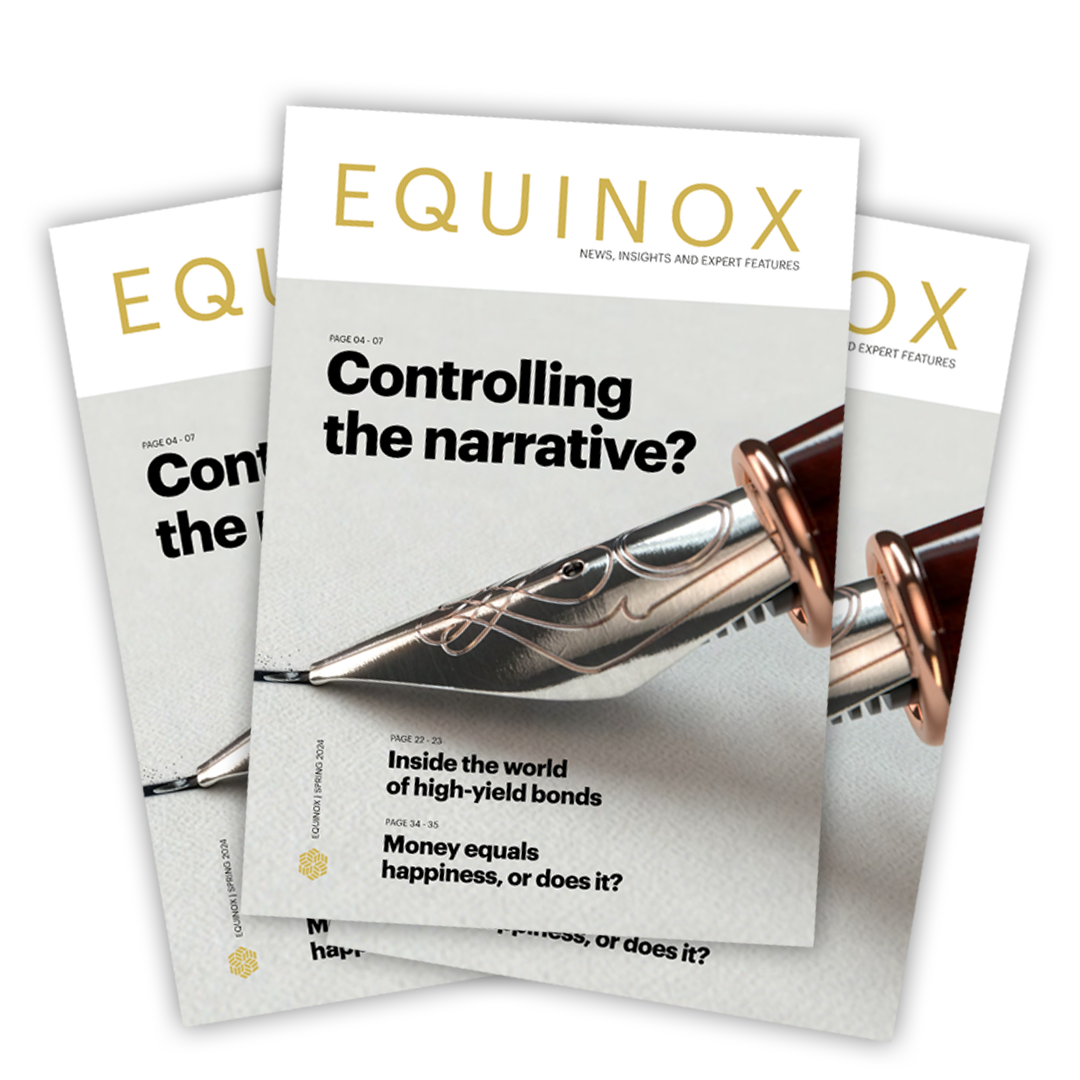Seeking Goldilocks
Executive summary
- Recent economic data has been supportive of stock markets.
- Most of the data has been somewhat better than markets had priced in, with the economy not doing as badly as many had predicted.
- Ideally, markets would like economic data that is neither too good nor too bad. If economic data is too good, then central banks may be more likely to increase interest rates further, which could hurt stocks and bonds.
- The ideal scenario for markets would be rapidly slowing inflation, and signs of a weaker job market, whilst avoiding a deeper recession.
- We remain cautiously optimistic but would not be surprised to see further volatility in stocks. We are more confident about corporate bonds, which we believe would be resilient to further rate hikes but also should hold up well even if we saw a mild recession.
Not too hot, not too cold, but just right…
No, we’re not talking about bowls of porridge but economic data. Recently, we’ve had a spate of economic releases which have fallen right into this “goldilocks” zone, where they have been good (or less bad than expected) but not too good. This has helped stock markets stage a decent rally in the early weeks of 2023.
But how can economic news be “too good”?
We have often noted that sometimes bad news for the real economy can be good news for markets, and vice versa.
This is because one of the big factors driving both equity and bond markets in recent times is interest rates.
When the economy is doing well, it encourages central banks to put up rates. This tends to hurt bonds and certain types of stock, especially notably high-growth areas such as technology.
When the economy is doing badly, central banks are more likely to pause interest rate hikes or consider rate cuts. This is generally good for government bonds. For equities and corporate bonds, it’s a bit more complicated.
If the economic data is really terrible, that implies that company profits will fall which isn’t great for share prices or corporate bonds (where we lend money to companies). But if it’s just mildly bad then it might actually help both asset classes.
For investors, a goldilocks economy which would help portfolios would look something similar to the below.
Inflation comes down rapidly
Energy and goods prices appear to have peaked and have fallen recently.
The West has done a good job of weaning itself off Russian oil and gas, which has helped reduce transport costs and may well feed into lower utility bills (but with a lag – see last month’s The Pulse).
Goods prices were the first area we saw inflation after the pandemic. With many people holding more cash than usual, and unable to go out and spend on services, many people bought “stuff” instead.
With the pandemic hitting supply chains, shipping prices soaring and demand increasing, goods prices went up sharply.
But as they say, “you only need one washing machine” (!) and there’s only so often you need to upgrade your TV. In addition, as economies have re-opened people would rather spend their money going out and on leisure activities. Now goods prices have softened, and inflation is rising in services instead.
What we’d like to see is a mild slowdown in consumer spending, helping reduce services inflation, whilst energy prices continue to fall.
Jobs market weakness
“Weakness” in the jobs market is a euphemism for rising unemployment.
Here is where we feel a bit conflicted; bad news for the real economy, and for the people affected, can sometimes conflict with what is good news for stocks and portfolios.
One of the big issues for investors right now is that the jobs market has been “too hot”.
For example, when the latest US “non-farm payroll” data was released (a closely watched index of jobs outside of the seasonal agriculture industry) this showed that 517,000 new jobs had been created in January.
This was far in excess of what had been expected (185,000) and was seen as bad news by markets with US futures falling by 1.3% immediately, and 2.2% for the technology-heavy Nasdaq index (source: Investing.com, 3 February 2023).
This was “too hot” because one of the factors the Federal Reserve looks at when deciding on interest rates is jobs.
Unlike the Bank of England, the Fed has a dual mandate of maximising employment as well as keeping inflation in check. US unemployment remains at extremely low levels.
Even if inflation keeps coming down rapidly, the Federal Reserve is unlikely to cut rates until it sees unemployment rising.
Again, what we’d like to see here (from a purely investment perspective) is a fairly mild rise in unemployment, whilst wage rises continue to be relatively muted.
In particular, we’d like to see job cuts in the right sectors. For example, we’ve recently seen some of the big US technology firms lay off several thousand people. This is good news for their stock prices.
Reducing staffing costs as well as other efficiency savings is one way of rebuilding profit margins even if revenues are softening. These layoffs are mainly just reversing course after they had added thousands of new employees since the pandemic.
In short, for portfolios, a mild recession or slowdown might actually be helpful. If company earnings remain relatively resilient but they cut costs, especially if interest rates were paused or cut at the same time, we could actually see stocks move significantly higher.
Walking a tightrope
The problem is, this is a very fine line.
Switching metaphors, the tightrope is very thin so it seems likely that at some point we will wobble a bit, even if we don’t actually fall off!
If economic data is either too good or too bad, then this would likely see some volatility in stock markets. However, we think we can reduce some of the potential effects through diversification.
I highlighted in last month’s The Pulse that smaller companies look great value in our view, on both sides of the Atlantic.
If the economy does worse than expected, then this may be bad for those companies in the short term, even if we believe in the long-term outlook, since they tend to be more economically sensitive.
However, if we also hold some technology stocks, then they actually may benefit if the economy slows as interest rates would be more likely to be cut.
We think this “barbell” approach to portfolio construction makes sense, however, if the economic data was really bad even rate cuts might not help stocks. This is part of the reason why we are more confident about corporate bonds in the short term than we are about equities.
When we buy a corporate bond, we’re lending a company money. In some ways, we don’t actually care how profitable they are or whether they grow, as long as those companies are solvent, not at risk of defaulting on our loan, and can afford the interest!
In addition, whilst corporate bonds would do well if rates are cut, we also think their yields are high enough to guard against the risk that central banks keep putting up rates more than expected.
This is not necessarily the case with government bonds such as UK gilts. Early this month, the yield on the 10-year UK government bond fell to about 3% pa, having been around 4.5% after the mini-budget late last year.
We felt this was too low given what was likely to happen to interest rates, and so we sold the vast majority of our gilt holdings. Yields have since risen back over 3.5%.
We have largely switched this into floating rate bonds. The estimated yield on this bond fund is now around 8% a year and would go higher if rates increased since the interest paid goes up when rates go up (source: TwentyFour Asset Management).
We recently had some good news in portfolios with the kick-out of another defined returns plan from Credit Suisse. This returned 54.15% over the five years we held it (10.83% pa) – more than double the return on the FTSE 100 Index to which it was linked, which returned 23.83% including dividends (Source: FE Analytics 30/01/18 to 30/01/23).
We have reinvested this money into a high-yielding corporate bond fund, which currently yields in excess of 10% pa. The reason for the particularly high yield is this is a riskier type of bond fund, which lends to companies with lower credit ratings.
However, we have “stress tested” this investment – and the rest of our fixed interest portfolio – based on default rates being similar to those we saw in the financial crisis of 2008. We believe the yield we are getting is high enough to compensate us even for that scenario, the worst in recent history.
Crucially, we don’t expect the current downturn to be anything like as bad as that one. At the moment, we are largely seeing what we’d like to see, with economic data being slightly less bad than the doom and gloom headlines had predicted.
We doubt that will continue uninterrupted, and as usual will try to diversify our positions in case things turn out much worse, or better than expected.
Past performance is for illustrative purposes only and cannot be guaranteed to apply in the future.
This newsletter is intended as an information piece and does not constitute a solicitation of investment advice.
If you have any further questions, please don’t hesitate to contact us. If you’re a client you can reach us on 0161 486 2250 or by getting in touch with your usual Equilibrium contact. For all new enquiries please call 0161 383 3335.



